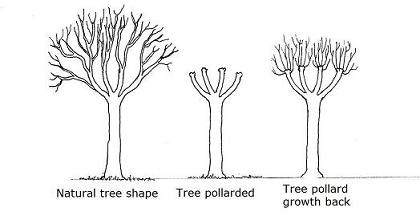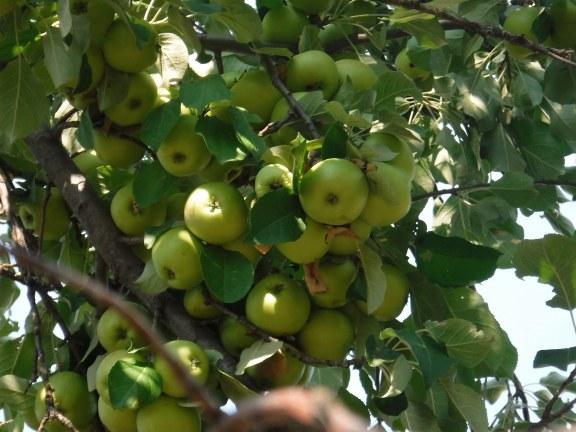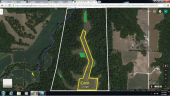




 5
5




"People may doubt what you say, but they will believe what you do."




 1
1




Jane Southall wrote:I have been researching the pruning. I have no axe, yet need to find a neighbor to borrow from. I have a hand saw, though. One has been struck by lightning and hard it hit in a storm. Still alive though. Also storms have pruned the other two a bit. I wasn't certain if I should heavily mulch at the base. I did start my under planting out a couple of feet from the tree. One of the trees is in a very moist area. I can tell by amount of smartweed. We have not had our usual dry summer so have been uncertain about mulching the wet area. Thank you so much for the input.

"People may doubt what you say, but they will believe what you do."





 5
5




List of Bryant RedHawk's Epic Soil Series Threads We love visitors, that's why we live in a secluded cabin deep in the woods. "Buzzard's Roost (Asnikiye Heca) Farm." Promoting permaculture to save our planet.




 1
1
















 2
2






List of Bryant RedHawk's Epic Soil Series Threads We love visitors, that's why we live in a secluded cabin deep in the woods. "Buzzard's Roost (Asnikiye Heca) Farm." Promoting permaculture to save our planet.
















 1
1




List of Bryant RedHawk's Epic Soil Series Threads We love visitors, that's why we live in a secluded cabin deep in the woods. "Buzzard's Roost (Asnikiye Heca) Farm." Promoting permaculture to save our planet.
 1
1




 1
1




 1
1




Jane Southall wrote:Shelah, I looked up natural enemies of your borer. You might not want woodpecker. Have you tried attracting nuthatches? Just a thought. Good luck to you. You have my sympathies.




 1
1




 1
1








 2
2





 3
3




Hans Albert Quistorff, LMT projects on permies Hans Massage Qberry Farm magnet therapy gmail hquistorff




 2
2




With appropriate microbes, minerals and organic matter, there is no need for pesticides or herbicides.
 2
2




Contemplation is the first act of disobedience...
 4
4




 just dig up the suckers in winter plant somewhere else and hey presto free apple trees
just dig up the suckers in winter plant somewhere else and hey presto free apple trees  you may have to graft on your favourate apple on to them but that's not a big issue .
you may have to graft on your favourate apple on to them but that's not a big issue .
Living in Anjou , France,
For the many not for the few
http://www.permies.com/t/80/31583/projects/Permie-Pennies-France#330873




Peace to you




Peace to you




Peace to you
 3
3




Strong belief triggers the mind to find the way
 2
2




Contemplation is the first act of disobedience...




 1
1




Susanna Pitussi wrote:Thanks so much David for what you mentioned about the compost and apples with scabs!
I'm in Nova Scotia and you can tell how wet and acidic our property is by how well the blueberries are doing just 12 feet from the apple trees.
I never realized it was the damp and acid soil causing the scab! I just dumped a load of almost finished compost under one tree for the chickens to spread and play in.
But I may also try composting into a couple of deeper holes like your Dad did. We're hard pressed to even get a fence post down 2 feet here without hitting granite or shale, but I can probably get a couple of narrow holes dug.
Strong belief triggers the mind to find the way
 2
2




Contemplation is the first act of disobedience...
 1
1




Trevor Walker wrote:Has anyone mentioned pea gravel as mulch and larvae barrier around the trunks?
Some fantastic books by Michael Phillips, The Apple Grower, and The Holistic Orchard.
Specifically he mentioned the pea gravel as barrier against curculio larvae, which must climb from fallen fruit to the trunk, and up to new fruits.




 2
2








Strong belief triggers the mind to find the way
 3
3




 1
1




 1
1






yet another victim of Obsessive Weeding Disorder




Rez Zircon wrote:See this wretched looking tree? it's been neglected for decades and mauled by bears. (It appears to be own-root, not grafted. It doesn't sucker.)
All I've done is chop out the deadwood I could reach from the ground. And this year we had a lot of spring rain. Look what it did -- these are all on one branch (out of reach without a ladder, so I didn't do anything with 'em):
They're not the best apples, but goes to show what a death-warmed-over tree is still capable of.
One up the way that two years ago looked totally dead from being covered with vines -- took two years to recover but this year has about a dozen apples on it and is looking much better.
Strong belief triggers the mind to find the way

|
Alas, poor Yorick, he knew this tiny ad:
Freaky Cheap Heat - 2 hour movie - HD streaming
https://permies.com/wiki/238453/Freaky-Cheap-Heat-hour-movie
|






